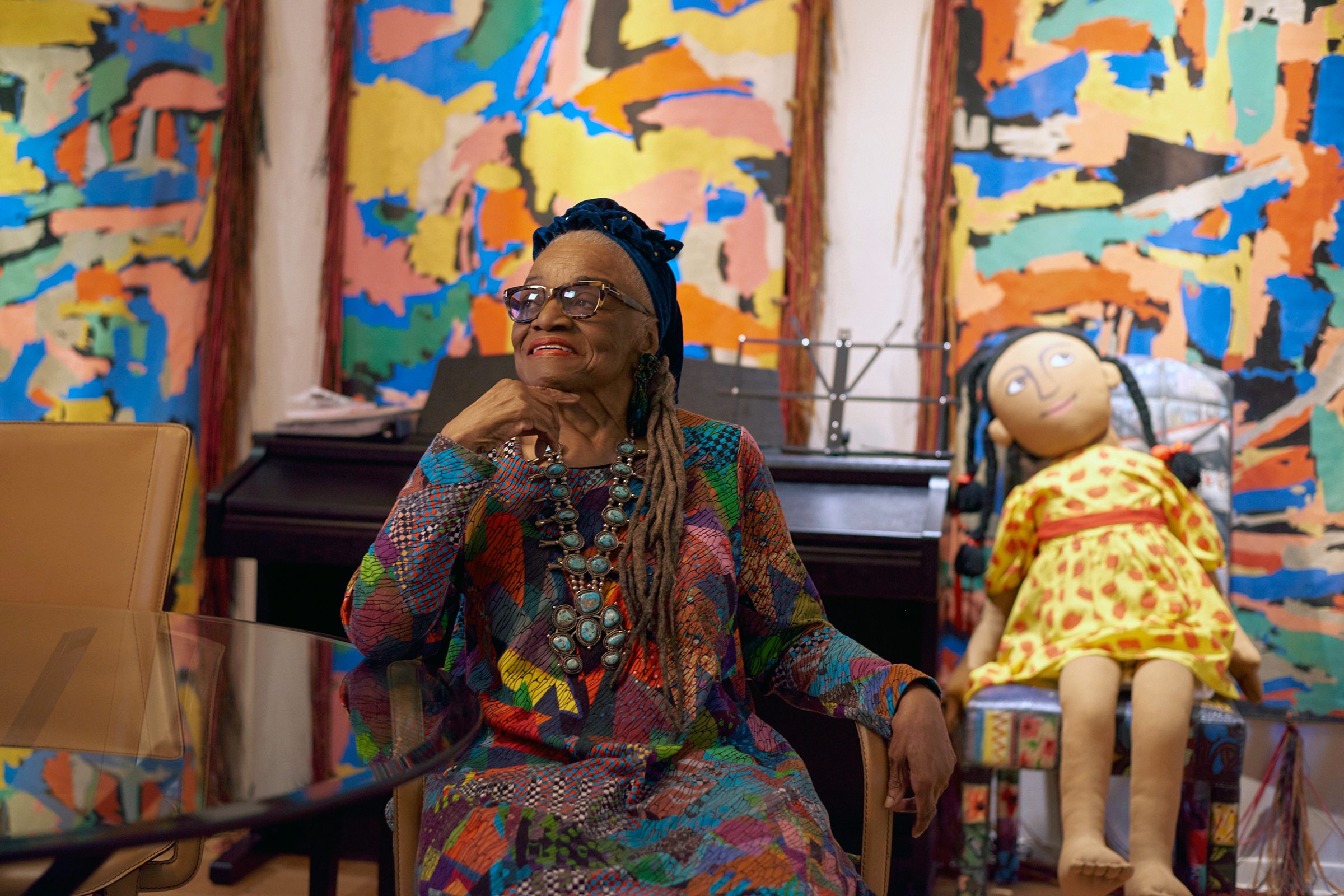A Renaissance woman born in Harlem during its own Renaissance, Faith Ringgold has painted, sculpted, written, sewed, and incited change all her life. Her fundamental reinvention of narrative-based art, especially her panoptic elevation of the American craft tradition, has firmly established her as one of the great artists of our time. From the late ’60s, when she was protesting the exclusion of Black and women artists from museums, to the late 2010s, when the expanded Museum of Modern Art proudly hung her masterpiece, the painting American People Series #20: Die (1967), Faith’s path has been courageous, profound, and unflinching in its depiction of contemporary society. Along the way, Faith created a global legacy with her beloved children’s books, including the award-winning favorite Tar Beach. A creative force and artistic visionary, she has been making breakthroughs for more than six decades, something very clearly exhibited in two retrospectives of her art this past year—at the Glenstone Museum’s groundbreaking presentation of the Serpentine-organized survey and at the New Museum’s showcase. It is with great joy that I reflect on the Studio Museum in Harlem’s seminal 1984 exhibition “Faith Ringgold: Twenty Years of Painting, Sculpture, and Performance 1963–1983,” and consider all that Faith has accomplished in the nearly four decades since. The art world is only just now catching up with Faith Ringgold.
Golden is the director and chief curator of the Studio Museum in Harlem
- Dua Lipa Manifested All of This
- Exclusive: Google Workers Revolt Over $1.2 Billion Contract With Israel
- Stop Looking for Your Forever Home
- The Sympathizer Counters 50 Years of Hollywood Vietnam War Narratives
- The Bliss of Seeing the Eclipse From Cleveland
- Hormonal Birth Control Doesn’t Deserve Its Bad Reputation
- The Best TV Shows to Watch on Peacock
- Want Weekly Recs on What to Watch, Read, and More? Sign Up for Worth Your Time
